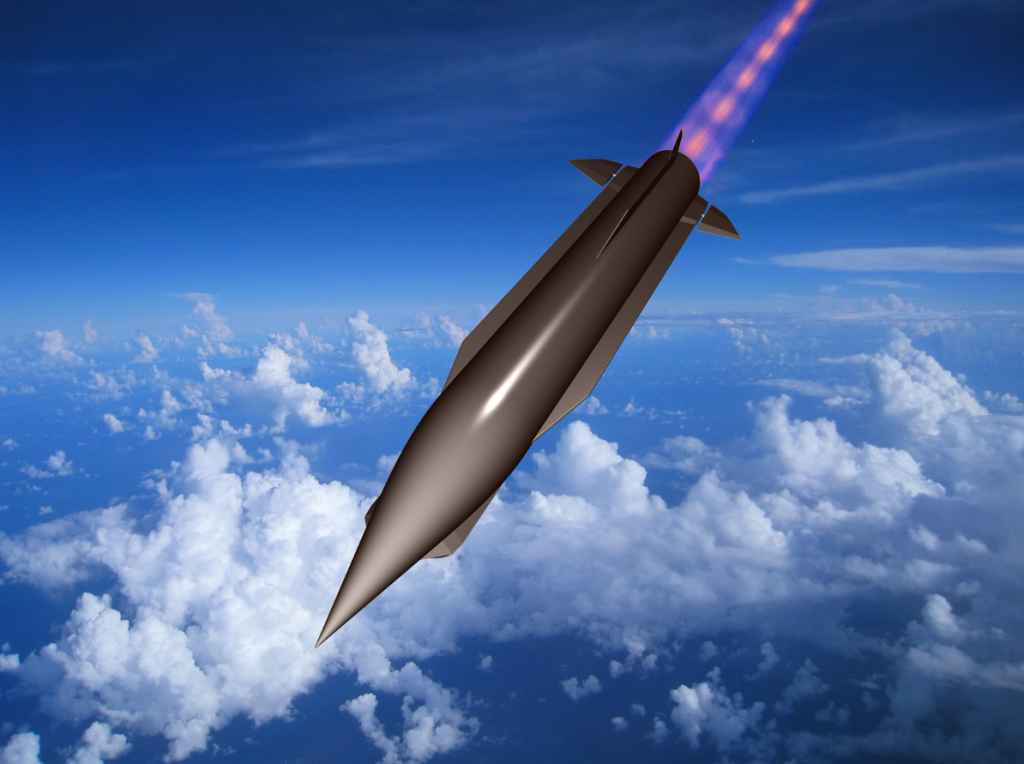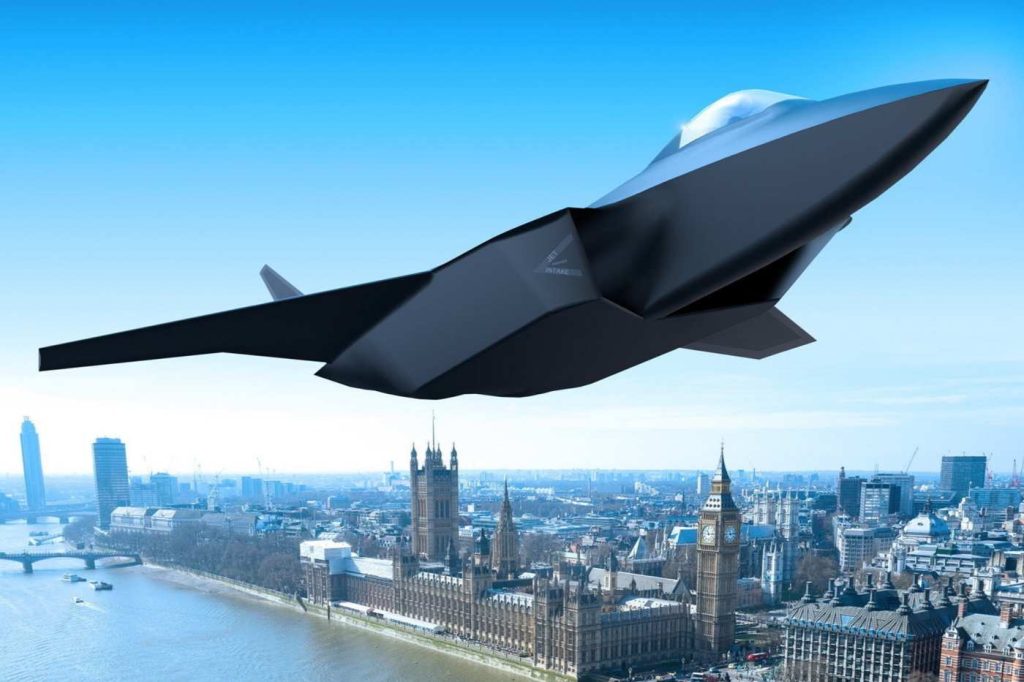90 organizations have been selected to support the development of the United Kingdom’s first advanced hypersonic missiles.
Ranging from universities to global weapons manufacturing firms, the entities are now eligible to bid for eight contracts through the UK’s Hypersonic Technologies & Capability Development Framework (HTCDF).
These contracts, led by the Ministry of Defence’s (MOD) Team Hypersonics (UK), will be worth up to £1 billion over seven years. The award of the contracts will be managed by Defence Equipment & Support (DE&S), the UK’s official defense procurement arm.
Several HTCDF organizations have experience using 3D printing for aerospace and defense applications. This includes major manufacturing companies such as BAE Systems, Raytheon, Lockheed Martin, and Skyrora. Therefore, additive manufacturing could be set to play a key role in the development of the UK’s new hypersonic missile systems.
“Hypersonics will be a landmark capability of the future and it is essential we keep pace with the developments of our adversaries,” commented James Cartlidge, Minister for Defence and Procurement.
“The Framework sends a clear demand signal to UK industry of our intention to develop hypersonics, which is critical for the nearly 50% of the suppliers which will be Small and Medium Enterprises (SMEs).”
HTCDF will re-open to new suppliers every 6 to 12 months, enabling the MOD to draw on new technologies and emerging market capabilities.

Bolstering the UK’s hypersonic missile capabilities
First announced in December 2023, HTCDF seeks to accelerate the development of the UK’s first sovereign Hypersonic Strike Capability and provide a route to market for “future operational elements of hypersonic and adjacent technologies.”
The initiative is part of a broader drive across the MOD to accelerate defense procurement following the Prime Minister’s announcement that he intends to spend 2.5% of GDP on defense by 2030. This would translate to an additional £75 billion in spending over the next six years.
The organizations selected for HTCDF will provide services and supplies to support the research, development and testing of hypersonic technologies.
The eight contracts include: design and integration; modelling, simulation, testing and evaluation; airframe and power generation; low Technical Readiness Level (TRL) concepts; a lethality package (including warhead and fuse); propulsion, including liquid and solid Propellant; onboard computing; and seekers.
According to DE&S, the new hypersonic missile initiative will be executed at pace, with the eight-lot framework aligning procurement and development objectives. This will reportedly negate challenges that often impede capability acquisition, facilitating an agile route to market.
Notably, nearly half of the eligible suppliers are small and Medium Enterprises (SMEs), most of which are based in the UK. This will enable the MOD to leverage a breadth of UK-based talent and develop a secure domestic supply chain.
“In an unsettled world, the battlespace is continually evolving, and the UK MOD recognises the need for agility to ensure we can rapidly develop and deliver the capabilities our Armed Forces need to protect our interests and those of our allies,” explained Paul Wilson, Director of Team Hypersonics (UK).

UK’s new hypersonic missiles to be 3D printed?
While it is unclear what role additive manufacturing will play in HTCDF, many eligible organisations will likely leverage their 3D printing technology and expertise.
BAE Systems possesses extensive experience in 3D printing for aerospace and defense applications. In 2017, the company partnered with Belgian precision engineering firm Asco Industries to develop 3D printing processes to advance the manufacturing of the Eurofighter Typhoon aircraft. In 2020 it collaborated with metal 3D printer manufacturer Renishaw to improve combat aircraft production with additive manufacturing.
Additionally, BAE is a leading partner in Global Combat Air Programme (GCAP), a partnership between the UK, Italy and Japan which seeks to produce a sixth-generation Tempest supersonic jet by 2035.
This short development time is set to be enabled by additive manufacturing. BAE intends to 3D print 30% of the fighter jet’s parts and is already 3D printing molds that will be used to manufacture fiber components for the Tempest.
Lockheed Martin has also adopted 3D printing for fighter jet manufacturing. In 2019, the aerospace firm worked with Premium AEROTEC, a German subsidiary of Airbus, to identify parts in the F-35 Lightning II fighter aircraft that can be produced using additive manufacturing.
More recently, Lockheed collaborated with metal 3D printer manufacturer Velo3D and aerospace part inspection company Vibrant to 3D print hypersonic ramjet engines.
Raytheon also possesses a notable 3D printing pedigree. The company has developed 3D printed military optics for the US Department of Defense.
European Patent Office (EPO) data shows that Raytheon submitted 1,441 international patent family (IFP) applications related to 3D printing between 2001 and 2020. This figure was second only to General Electric (GE) during this period.
Edinburgh-based private rocket manufacturer Skyrora was also selected to be part of HTCDF. The company possesses a long history of 3D printing rocket engines, including its latest 70kN model which began full-duration testing last year.

3D printed weapon systems
The use of additive manufacturing in the production of advanced weapon systems is growing globally.
Earlier this year, rocket engine manufacturer Ursa Major signed a contract with the US Navy to design, manufacture and test a 3D printed prototype solid rocket motor (SRM) for the Standard Missile (SM) program. The prototype, optimized for manufacturability and reliability, will be produced using the company’s Lynx AM technology
This contract was signed under the Naval Energetic Systems and Technologies (NEST) Program and seeks to develop a new 3D printable design for the Mk 104 dual rocket motor. This propulsion system powers America’s arsenal of SM-2, SM-3, and SM-6 missiles.
Elsewhere, it was announced in 2022 that a scramjet engine built by propulsion system manufacturer Aerojet Rocketdyne was successfully flight-tested as part of the US hypersonic missile research project. The engine includes a 3D printed drive system, allowing it to be manufactured with 95% fewer parts than previous iterations.
Join industry leaders in the Aerospace, Space and Defense world for Additive Manufacturing Advantage, an online event for AM professionals, register now.
Want to help select the winners of the 2024 3D Printing Industry Awards? Join the Expert Committee today.
What does the future of 3D printing hold?
What near-term 3D printing trends have been highlighted by industry experts?
Subscribe to the 3D Printing Industry newsletter to keep up to date with the latest 3D printing news.
You can also follow us on Twitter, like our Facebook page, and subscribe to the 3D Printing Industry Youtube channel to access more exclusive content.
Featured image shows a digital render of a hypersonic missile. Image via the Ministry of Defence.


